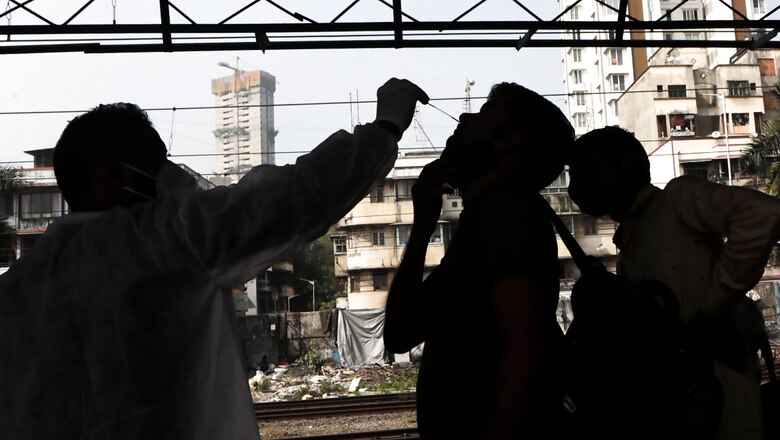
views
Stop looking at the daily number of Covid-19 cases because they don’t mean anything, M Vidyasagar, the head of the National Covid-19 Supermodel Committee told News18.com, highlighting that ending the virus spread is impossible as it dodges immunity.
According to Dr M Vidyasagar, professor at Indian Institute of Technology (IIT) in Hyderabad, the raw number of those who test positive, in the context of Omicron, is not an appropriate measure to highlight the intensity of the situation. He explained that the heavily mutated coronavirus escapes vaccine-induced immunity and infection-related natural immunity, hence leaving the human body vulnerable against it.
“We should stop looking at the number of cases to take any policy-related decisions, including the closure of schools, offices or lockdowns. The cases will go up as people have no defence but won’t result in severe disease,” he told News18.com. “It is like people will catch a cold in the winter.”
Infection will spread no matter what, he said. “Lockdown will not stop the virus from spreading. Rather, it will be used to create panic and for scare-mongering.”
“In this scenario, the number of cases per day will be high, but that by itself will not mean anything. While the person tests positive for the infection, he/she will not end up getting the severe form of the disease. You get the virus but not the disease,” he said.
The supermodel committee, headed by Professor Vidyasagar, also comprises Professor Manindra Agrawal of IIT-Kanpur and Lt Gen Madhuri Kanitkar, the deputy chief of the Army Medical Service. It was formed by the Narendra Modi government to make projections on the likely spread of the Covid-19 pandemic.
While the committee hasn’t officially met for more than six months, the same members, along with Dr Anurag Agrawal of CSIR institute IGIB and Dr. Pramod Gard of DBT-THSTI, have formed Sutra Consortium to project scenarios.
Data Shows Chances of Severe Disease Low
The earlier worst-case projections made by the members — using the data generated by South Africa — were based on assumptions that Omicron spreads about 2.2 times faster than the Delta variant, that vaccination is bypassed completely, and that natural immunity is bypassed in about 50% of those with prior exposure to Delta.
This led to a projected peak of 1.5 lakh daily cases, occurring in mid-February. However, the projections have changed as assumptions proved to be incorrect in Indian context.
The data, so far, highlights that Omicron is equally infectious as Delta, Dr Vidyasagar said. “Secondly, natural immunity is bypassed anywhere between 70% and 100% of the people. Hence, the number of infection cases is very high as there is no defence against the virus.”
Hospitalisation and Oxygen Requirement Could Be Much Lower
According to the data shared by Dr Vidyasagar, South Africa, in the beginning of the Omicron wave, witnessed around 12% hospitalisation, while India is currently recording around 3.5%. In the United Kingdom, it’s even lower, around 1%.
He said that in India, oxygen requirement is in around 1.3% of the cases. “It means out of every 1,000 positive cases, 35 people are hospitalised and out of them, 13 require oxygen. Moreover, the average stay in the hospital appears to be shorter this time around,” he said, adding that it is too early to draw definitive conclusions.
Assume that we have 10 lakh cases every day, he said while explaining the worst-case scenario. “It means 35,000 hospitalisations will take place (assuming 3.5% hospitalisation rate), out of which 13,000 will require oxygen support (assuming 1.3% hospitalisation rate). Here, discharge time is faster at around 3 to 5 days compared to Delta’s 10 days.”
“The hospitals across India should not be overwhelmed catering to these numbers unlike the second wave when hospitalisation and oxygen requirements were too high.”
Read all the Latest India News here




















Comments
0 comment